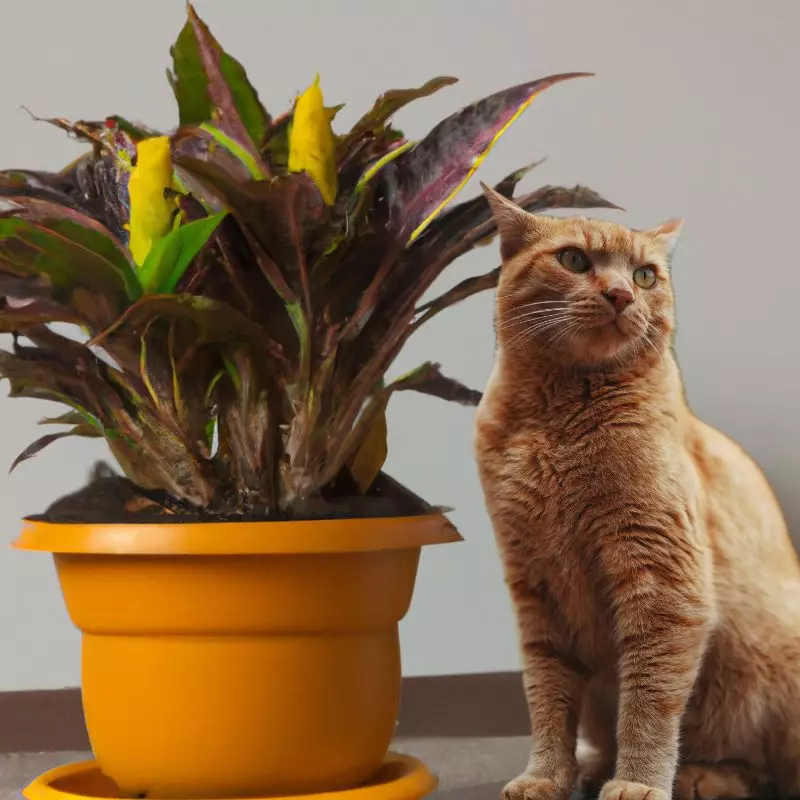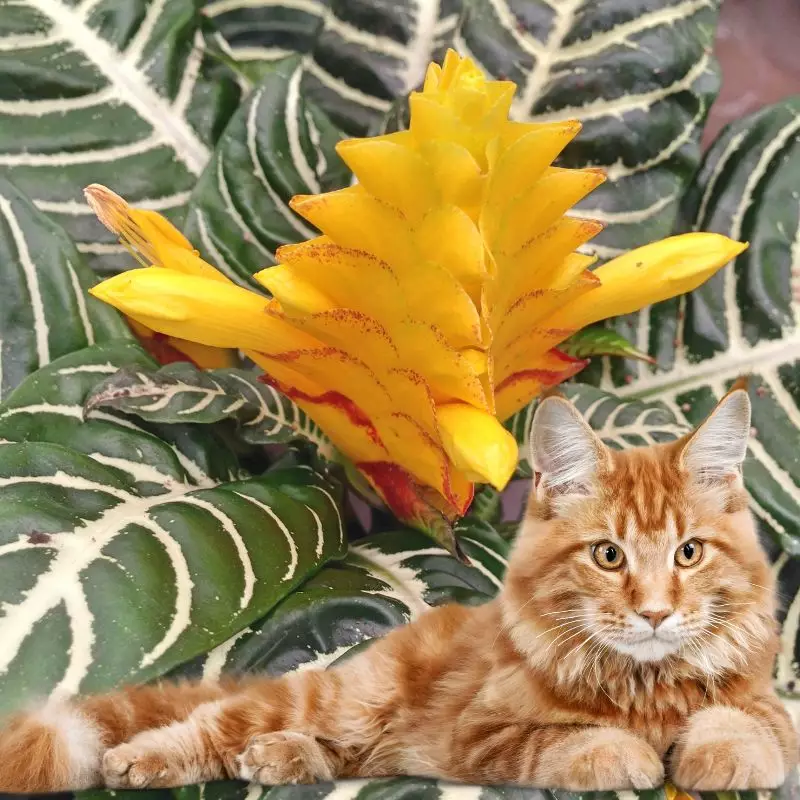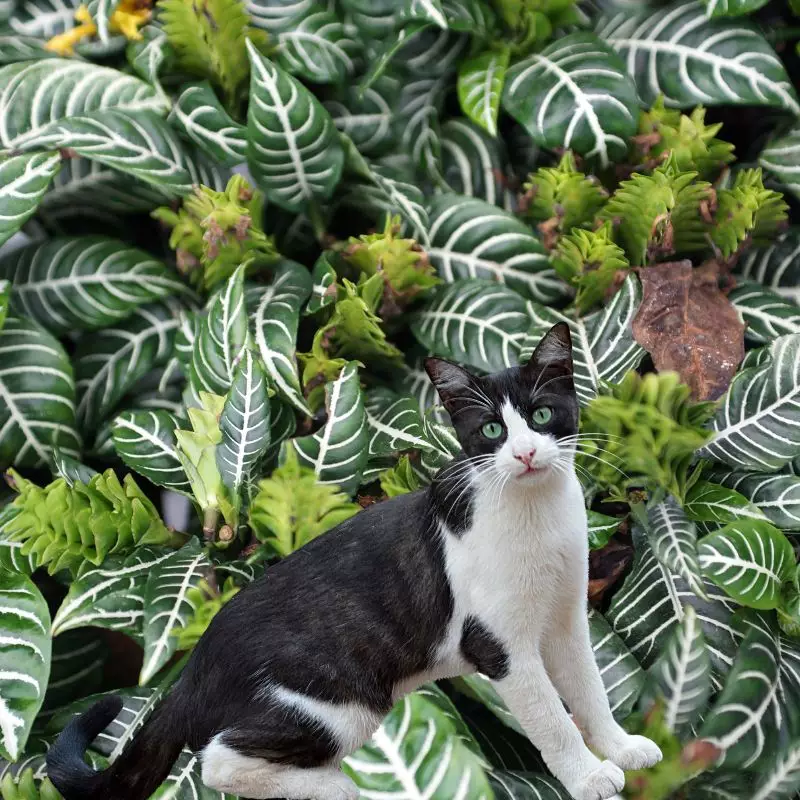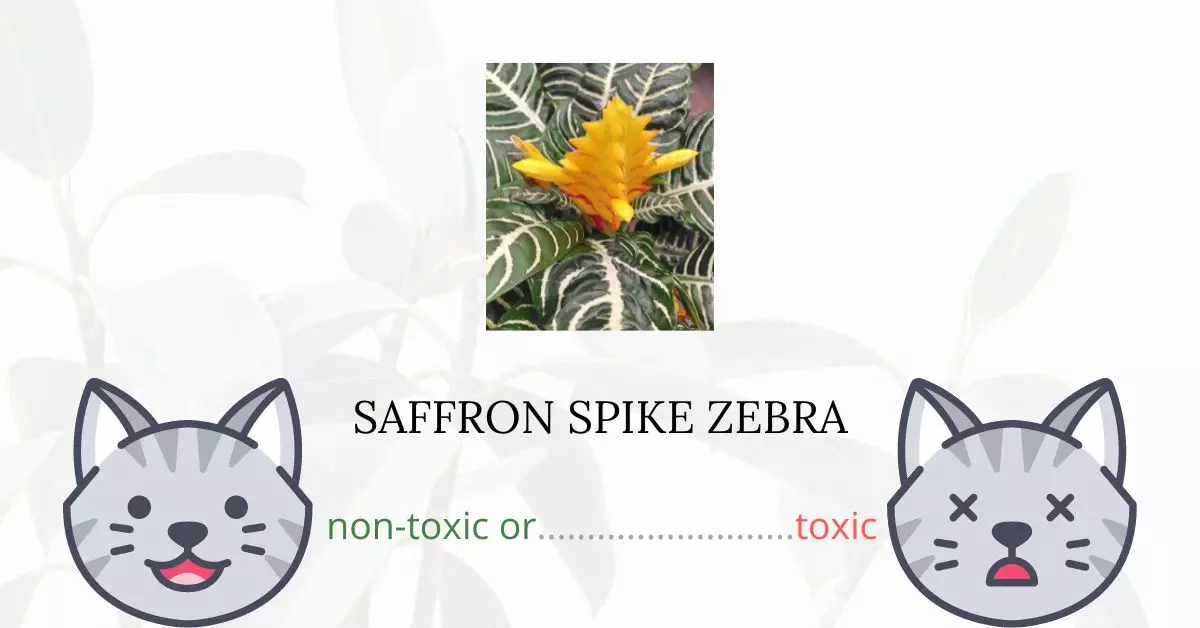No, the Saffron Spike Zebra plant is not toxic for cats.
We have meticulously crafted this article in collaboration with a team of experienced DVMs (doctors of veterinary medicine). Leveraging their expertise, and after extensive research on high-authority websites such as the ASPCA (American Society for the Prevention of Cruelty to Animals) and PetMD, we can confirm that there are no poisonous components found in the Saffron Spike Zebra plant.
Consequently, it’s suitable for homes with feline companions. However, even with non-toxic plants, it remains crucial to exercise precautions to ensure the safety and well-being of your cats.
Can Cats Eat Saffron Spike Zebra?

Cats can eat a small out of saffron spike zebra. It will not cause life-threatening effects in cats but it is not good to let them eat huge amounts of this plant.
Plants, in general, are not suited to include in a cat’s daily meal because they are carnivores. Cats’ food should be meat-based as their bodies are created for it. Since cats cannot fully digest plants, they end up suffering from indigestion in case they ate too much.
Using fertilizers and pesticides is also a factor that you have to closely monitor. Some of these products leave toxic chemical residues on plants. If these traces happen to find their way to your cats’ mouths, your felines may suffer from poisoning.
What is Saffron Spike Zebra?

Aphelandra squarrosa, or saffron spike zebra, is an Acanthaceae plant native to Brazil. It can reach up to 6 feet in height and 5 feet in width. It is most commonly found in areas with high humidity and tropical heat.
In other parts of the world, spike saffron zebra is cultivated as a broad-leaf evergreen houseplant. It thrives in conditions that provide plenty of warm, bright, indirect light, as well as high humidity.
It has beautiful yellow-bract flowers and unique dark green ovate to elliptic leaves with white stripes. Too much watering or severe dryness will brown and drop the bottom leaves. Although it rarely blooms, it is still possible by providing long periods of indirect light.
The common name Zebra plant comes from the veined foliage, which resembles the stripes on a zebra. Spike saffron zebra is typically grown for its striking foliage and flowers.
Keeping Cats Away From Saffron Spike Zebra

Some cats avoid litter boxes and do their business on your plants instead. They might be doing this for a reason so check your feline companions’ litter boxes. Increasing the frequency of cleaning their litter boxes may help to prevent them from getting into your plants. Replacing the litter on a regular basis is also a nice idea, and it doesn’t hurt to scrub the empty box before refilling it.
Cats respond positively to behavioral training. They can be taught to stay off the counter, stop clawing at the furniture, and stop eating the houseplants. It is also recommended for felines to be litter trained.
Use compassionate training techniques to teach your cat which behaviors are acceptable and which are not.
Plants to Avoid For Your Cats
If you are a cat owner and unsure if the plants growing in your yard are harmful to your cats, check out this list of toxic plants for cats. You can also check our list of non-toxic plants for cats.





